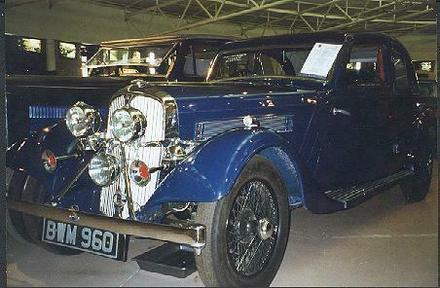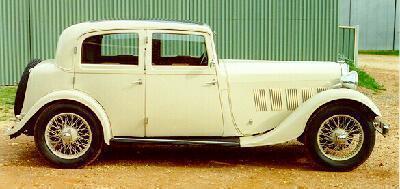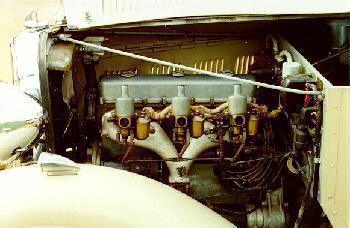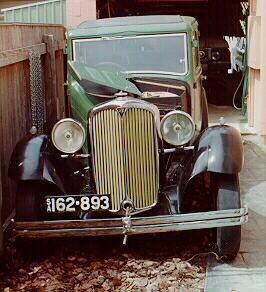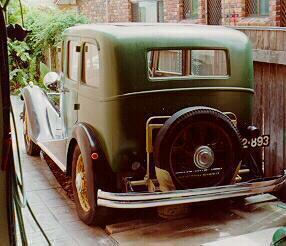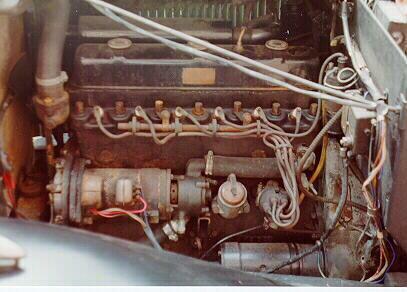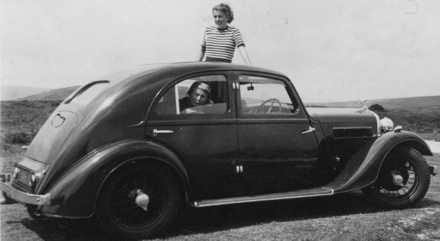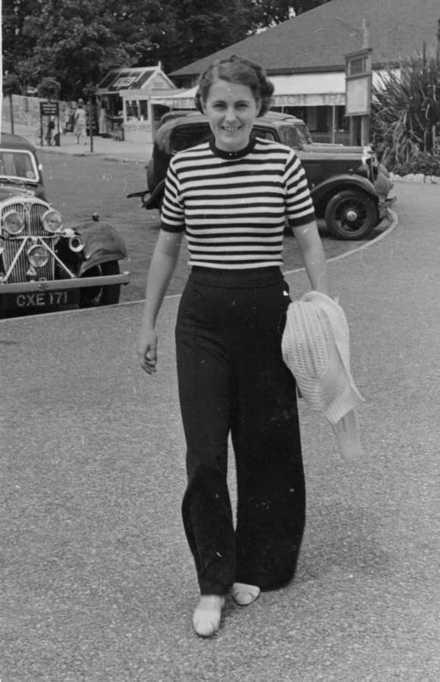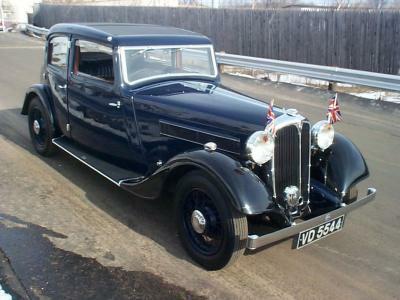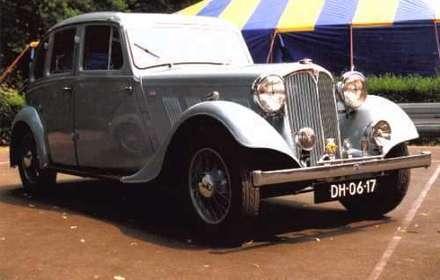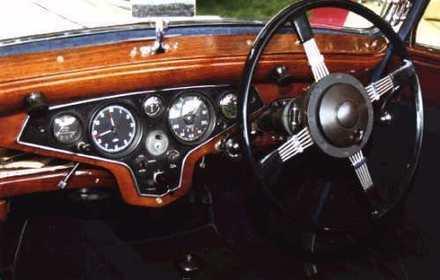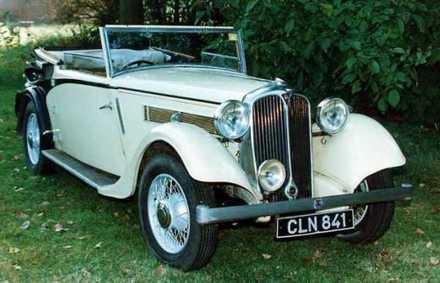
This picture was shot soon after Michel bought the car in The Netherlands.
This Rover 14 Drop Head Coupe from 1936 belongs to Michel Bonhomme in France.
Michel's own words about the car:
You may remember (did I tell you ?) that the car feeled very weak when I first tried it on the slope behind the country house.
Well, there were some reasons : timing was out, and brakes "freezed" in mud, rust and old dried grease (the Luvax system is no longer on the car, and I don't have one for replacement).
A (proper ?) refurbishement of the car was then endeavoured, began in the summer of 2000, "developped" last winter, and eventually lasted during all spring and until late in summer.
The frame was cleaned and repainted (without removing the bodywork itself), electrical system was thoroughly rewired, dash board and instruments cleaned, panel removed, fixed and repainted, brakes dismantled and rebuild, as well as the front screen.
Radiator also was replaced, inlet manifold repaired (missing part on the upper side), carburettor dismantled, cleaned, some gaskets replaced.
The engine was opened, cleaned, a little service given to the valves, surfacing of the cylinder head, and cleaning oil pump, water pump, sump, repairing the oil filter which was more like a series of holes, etc, completed the job.
Furthermore, distribution timing was properly "redefined", which definitely helps a car for running, you will agree.
My friend Didier Moigneu (on the picture), who must be born with the hands in a car, was of a tremendous help in all this.
At the end the work was topped (the cherry on the cake) with repainting the engine bay and engine itself. Looks much more shining this way!
But in no way this helped the engine starting, until we discovered a connection on the coil was not that tight (try it, it's a good way to wonder why a car does not start!).
The car is now back on the road, and has run about 200 miles, her first for a long time, I believe.
After the first kms with sparking plugs, the overall power seemed to be so low that I was about to enlist in a snails race.
It appeared that those plugs were of one of the thousand wrong type for this engine, and a proper replacement following Mike Couldry's precious advise gave much better output.
Now the car is running, has participated in her first rally, and is very pleasant to drive.
Still many things to do:
- try to understand why the dynamo looks so lazy at charging he battery,
- find other cables for the sparking plugs, to have the engine run on its six legs, every time,
- probably refurbish the steering box one day in the future,
- also the clutch, which feels a little sick,
- and possibly fixing the carburettor, as the car runs quite rich.
But it's definitely a fine car.
Regards Michel Bonhomme
